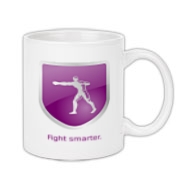When considering upper body striking, martial artists tend to focus on the pectoral, triceps and deltoid muscle groups, and the glenohumeral (GH) joint, which is the most obvious shoulder joint. The GH joint consists of the humerus and the glenoid fossa of the scapula (the “socket” of the shoulder blade). Since this joint is essentially like a ball resting on a shallow dish, and not a deep socket like the hip joint, ligaments and the attached muscles provide most of the stability. There are also three other joints in the shoulder complex that play important roles in maintaining stability for the GH joint, with the scapulothoracic being most prone to abuse in combative training. This joint is formed by the fibrous connection of the scapula to the posterior torso wall, which allows the scapula to glide and rotate as the GH joint requires.
The serratus anterior and the trapezius provide the ability to adduct (pull close to the ribcage), retract, depress, and upwardly or downwardly rotate the scapulae. They maintain alignment of the glenoid fossa with the head of the humerus. A strong, reasonably flexible rotator cuff group is important, but the trapezius needs to be able to provide rotation and stabilization so that the GH joint stays centered and the rotator cuff isn’t impinged. The trapezius and serratus need to work synergistically with the GH joint movers. Striking in general requires the same coupling of scapular and humeral actions that has been reported for other overhand actions (Kibler, et. al., 2007) such as the tennis serve.

 are available here.
are available here.